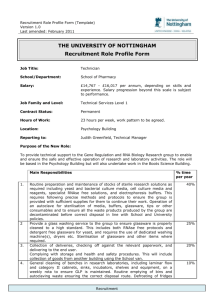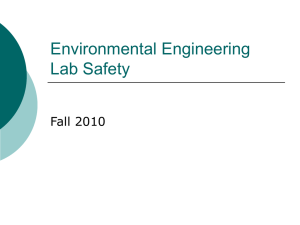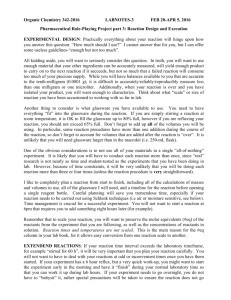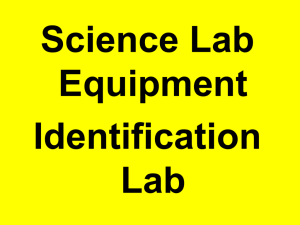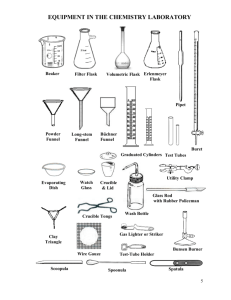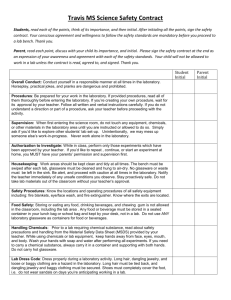Glassware & Equipment
advertisement
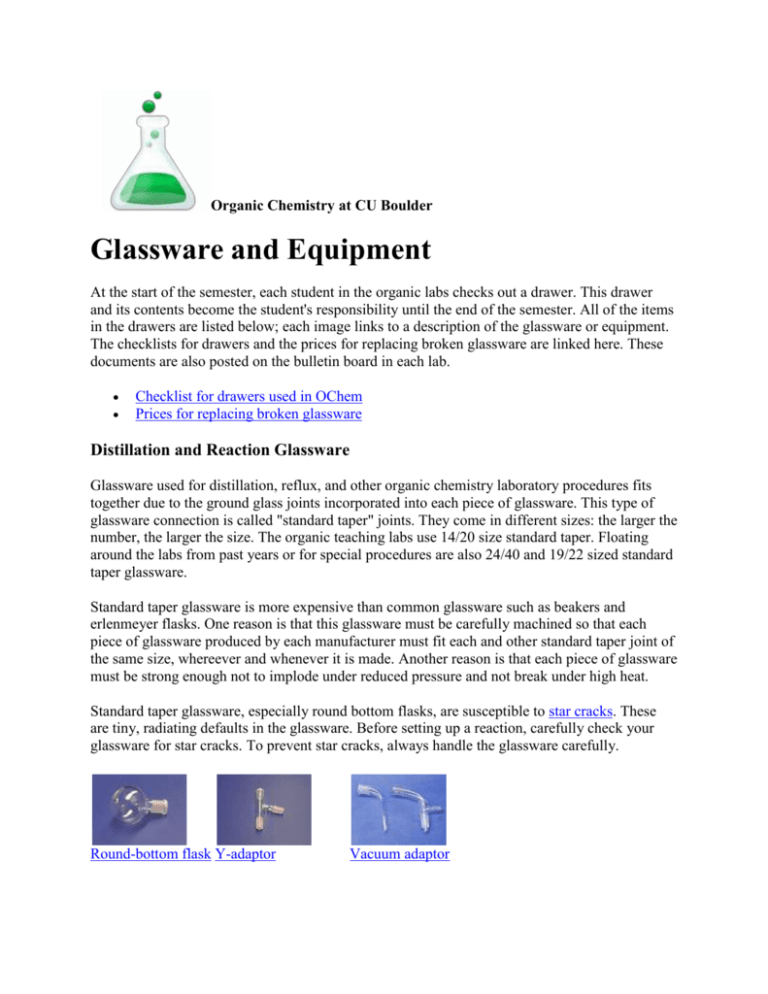
Organic Chemistry at CU Boulder Glassware and Equipment At the start of the semester, each student in the organic labs checks out a drawer. This drawer and its contents become the student's responsibility until the end of the semester. All of the items in the drawers are listed below; each image links to a description of the glassware or equipment. The checklists for drawers and the prices for replacing broken glassware are linked here. These documents are also posted on the bulletin board in each lab. Checklist for drawers used in OChem Prices for replacing broken glassware Distillation and Reaction Glassware Glassware used for distillation, reflux, and other organic chemistry laboratory procedures fits together due to the ground glass joints incorporated into each piece of glassware. This type of glassware connection is called "standard taper" joints. They come in different sizes: the larger the number, the larger the size. The organic teaching labs use 14/20 size standard taper. Floating around the labs from past years or for special procedures are also 24/40 and 19/22 sized standard taper glassware. Standard taper glassware is more expensive than common glassware such as beakers and erlenmeyer flasks. One reason is that this glassware must be carefully machined so that each piece of glassware produced by each manufacturer must fit each and other standard taper joint of the same size, whereever and whenever it is made. Another reason is that each piece of glassware must be strong enough not to implode under reduced pressure and not break under high heat. Standard taper glassware, especially round bottom flasks, are susceptible to star cracks. These are tiny, radiating defaults in the glassware. Before setting up a reaction, carefully check your glassware for star cracks. To prevent star cracks, always handle the glassware carefully. Round-bottom flask Y-adaptor Vacuum adaptor Condenser Thermometer adaptor Claisen adaptor Bench Glassware This glassware is generally less expensive than the reaction glassware listed above, due to the absence of ground-glass joints (the separatory funnel is an exception). It is generally used for measuring, storing and working up the reaction, rather than performing the reaction itself. Beaker Erlenmeyer flask Side-arm flask Buchner funnels Stemmed funnels Separatory funnel Thermometer Watch glass Graduated cylinder Stir rod Vial Crystallizing dish Pasteur Pipet Bench Equipment This equipment is used to support the reaction apparatus or manipulate the contents. All of these items can be replaced at any time for free. Versatile clamp 3-pronged clamp Ring clamp Spatula Scoopula Keck clip Stir bar Forceps Community Equipment This equipment does not belong in the lab drawers but should be left out for everyone to use. Each student fume hood should contain a heating mantle, stir motor, variac and ring stand. There are extras of all of these in the back of the room. The tubing is located on the shelves in the back of the room. Heating mantle Stir motor Variac Stirring Hotplate Ring stand Tubing Original content © University of Colorado at Boulder, Department of Chemistry and Biochemistry. The information on these pages is available for academic use without restriction. This page was last updated on May 20, 2015.
